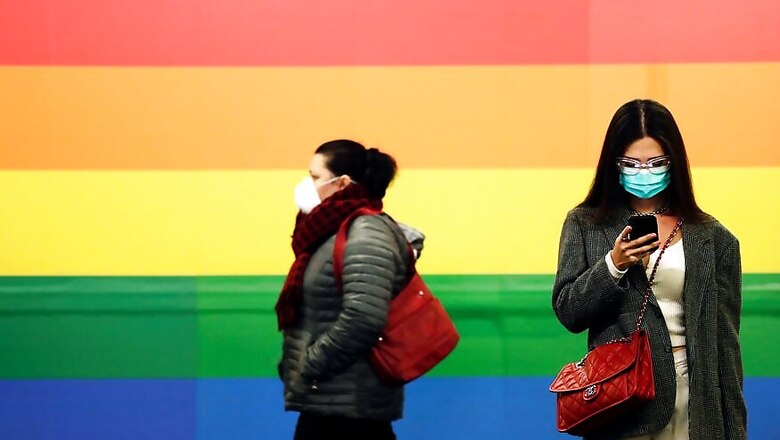
views
Italy and Spain, the two European countries hardest hit by the new coronavirus, have enforced the most drastic lockdowns to curb the pandemic but one country, Sweden, stands out for allowing life to go on much as before, Google data show. The data is also in stark contrast to other parts of the world including India, which remains in a state of nationwide lockdown until at least April 15. The recently shared data revealed that trips to shopping malls are down by 77 percent, park visits are down 57 percent, public transits down 71 percent and office visits are down 47 percent. None of this, however, reflects on the way Sweden is moving.
An analysis of smartphone location data by the US search engine giant showed that visits to shops, parks or railway stations fell steeply in most European countries between Feb. 16 and March 29 as governments sought to slow the explosive spread of the COVID-19 disease. That data usually supports location-based apps like Google Maps but the Alphabet Inc unit has repurposed it to examine mobility in 131 countries, giving clues on the impact of various social-distancing measures.
In Italy and Spain, which have imposed near-total lockdowns on public life, retail and recreational trips were down by 94 percent. The two Mediterranean countries, along with France, saw the sharpest drops in people passing through transportation hubs like railway or metro stations. Visits to workplaces were down by more than 60 percent in Italy and Spain, in an indication that their lockdowns may turn out to be the most economically disruptive.
Italy and Spain have each recorded more than 110,000 COVID-19 cases and over 10,000 fatalities but the restrictions they have imposed are, with a time lag, starting to ‘flatten the curve’ of new infections. To the north, Sweden has by contrast sought to minimise disruption to social and economic life while its caseload remains low. Visits to restaurants, shopping centres and cinemas, for example, have declined by just 24 percent. Numbers going to grocery markets and pharmacies have fallen by 10 percent, while trips to the park are actually up by 43 percent as people head out to enjoy the Scandinavian spring. Going out for a walk or a jog is up in Denmark, Estonia and Finland too.
The number of people spending more time in residential areas is up by 5 percent in Sweden, whereas in Italy and Spain it has increased by 24 percent and 22 percent respectively as people are confined to their homes. France, which has Europe’s third largest COVID-19 death toll, has also taken sweeping social-distancing measures but their impact has been less severe than in Italy and Spain, with the exception of movement through public transit hubs.
In Britain, which moved relatively late to restrict people-to-people contacts, the impact has been less severe than in southern Europe. Retail and recreation visits are down by 85 percent, public transport by 75 percent and time spent in workplaces by 55 percent. Germany, which has the third-highest caseload but a relatively low number of fatalities thanks to widespread early testing for COVID-19, has taken a less radical approach with the number of people visiting workplaces down by 39 percent, the data show.
(With inputs from Reuters)




















Comments
0 comment